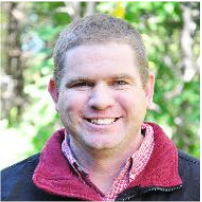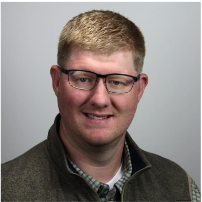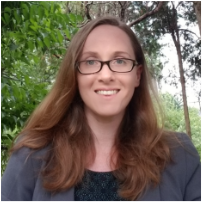
Nutrient Management Topics
Printable conference program
-
22. The A-B-C's and Y's of IDC in soybean (1.0 NM)
Daniel Kaiser, associate professor, Soil, Water and Climate, University of Minnesota, St Paul, MN
Iron deficiency chlorosis (IDC) is a significant yield robber in soybean affecting many acres in Western U.S. growing regions. While many growers dealing with IDC know areas of the field that are impacted by IDC do they really know the root cause of the problem. While certain soil factors are important in dictating where IDC does occur in fields the process by which IDC forms is more complex based on current research findings. Research has shown methods for dealing with IDC that will increase soybean yield. Some of these findings will be discussed in this presentation.
Session A - Monday, 9:00 AM - 9:50 AM
Session B - Monday, 10:00 AM - 10:50 AM
-
23. Impacts of cereal rye on nitrogen cycling and crop production: Benefits, challenges, and potential solutions and opportunities (1.0 NM)
Richard Roth, assistant professor, Agronomy and extension nitrogen science specialist, Iowa State University, Ames, IA
Cereal rye is the most commonly grown cover crop in the United States. However, despite well- documented environmental benefits, adoption presents significant agronomic challenges in row-cropping systems, especially corn production. This session will highlight the agronomic, economic, and environmental impacts of cereal rye use in the U.S. Corn Belt and explore potential solutions to the challenges that exist. Heavy emphasis will be on cereal rye's impact on the nitrogen cycle and its consequences for crop production.
Session I - Tuesday, 8:00 AM - 8:50 AM
Session J - Tuesday, 9:00 AM - 9:50 AM
-
24. Agronomic, economic, and water quality implications different P and K fertilization management concepts (1.0 NM)
Antonio Mallarino, professor and extension soil fertility specialist, Agronomy, Iowa State University, Ames, IA
There is no single "best" way of implementing nutrient "best management practices" (BMPs). Farmers and crop consultants can use different soil-test interpretations as well as fertilization rates and times of application and placement methods based on different combinations of agronomic, economic, and water quality considerations. The presentation will discuss the potential impacts of P and K management practices recommended by ISU and others commonly used in Iowa.
Session G - Monday, 3:10 PM - 4:00 PM
Session H - Monday, 4:10 PM - 5:00 PM
-
25. Minimizing yield loss with accurate dry fertilizer placement (1.0 NM)
Matt Darr, professor, Agricultural and Biosystems Engineering, Iowa State University, Ames, IA
Larger and more productive dry fertilizer applicators increase the risk for non-even fertilizer placement. Tips and best practices will be covered to understand risk factors and ways to mitigate yield losses associated with dry fertilizer application.
Session N - Tuesday, 2:00 PM - 2:50 PM
Session O - Tuesday, 3:00 PM - 3:50 PM
-
26. Iowa Nitrogen Initiative: Overview, recruiting and 2022-2023 results (1.0 NM)
Melissa Miller, project director, Iowa Nitrogen Initiative, Iowa State University, Ames, IA; Mitch Baum, postdoctoral research associate, Agronomy, Iowa State University: Mike Castellano, professor, Agronomy, Iowa State University
We will present and discuss 2022-2023 on-farm N-trials results, key learnings, and plans for 2024.
Session E - Monday, 1:00 PM - 1:50 PM
Session F - Monday, 2:00 PM - 2:50 PM
-
27. Managing crap (1.0 NM)
Daniel Andersen, associate professor, Agricultural and Biosystems Engineering, Iowa State University, Ames, IA
Manure is an important fertilizer source in Iowa. We will review strategies from getting the most value from manure, dive into Iowa State's manure fertility recommendations, and look at how uncertainty in nutrient concentration, rate control, aand availability impact how we use manure. Latest research on manure application timing, manure with cover crops, and technology are impacting manure management.
Session K - Tuesday, 10:10 AM - 11:00 AM
Session L - Tuesday, 11:10 AM - 12:00 PM
-
28. Iowa Nutrient Reduction Strategy and your farm: Using the nutrient tracking tool to estimate nutrient loss from row crop acres (0.5 NM)
Kay Stefanik, assistant director, Iowa Nutrient Research Center, Iowa State University
As we mark the 10-year anniversary of the Iowa Nutrient Reduction Strategy (INRS), much effort is still needed to meet the strategy’s 45% nutrient load reduction goals. While it is important that everyone does their part, it can be difficult to know what that part is. The purpose of this talk is to introduce farmers and landowners to the Nutrient Tracking Tool, a free modeling program that can be used to estimate nutrient loss at the farm scale.
Session C - Monday, 11:00 AM - 11:25 AM
Session D - Monday, 11:35 AM - 12:00 PM






